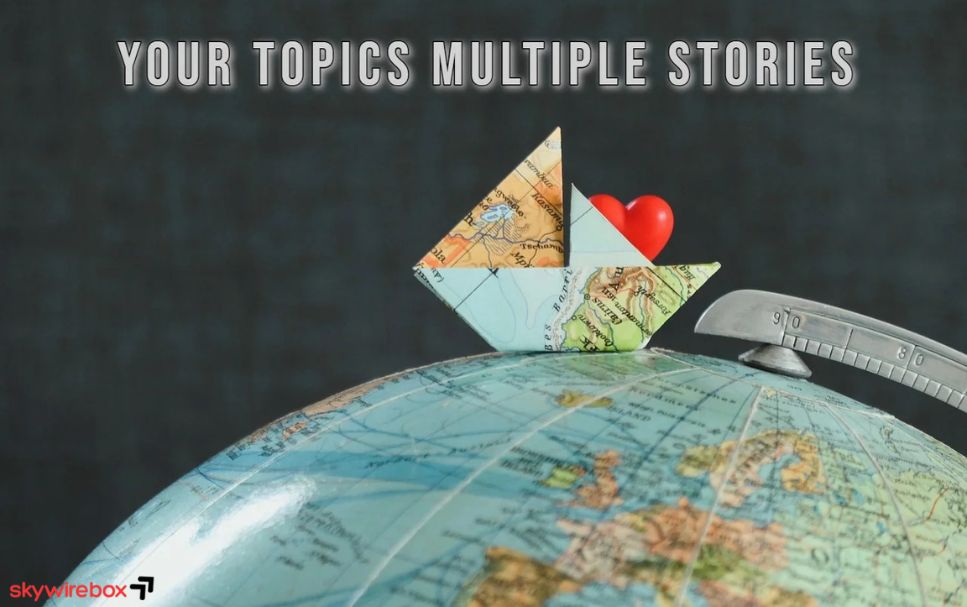Have you ever wondered how a single story can hold more than one idea, more than one message? Your topics don’t have to be limited to just one angle.
In fact, exploring multiple stories within your main topic can make your writing richer, more engaging, and unforgettable. When you tap into different themes, you keep your readers curious and hooked, wanting to discover every layer you’ve crafted. Ready to unlock the power of multiple stories in your writing?
Let’s dive in and see how you can turn your ideas into a captivating web of narratives that speak directly to your audience.
Multiple Themes In Stories
Stories often have more than one theme.This creates a richer and more interesting story. Themes can be linked together, making the story feel connected and deep. For example, a story might explore friendshipand courageat the same time.
Having multiple themes lets writers show different parts of life. It helps readers think moreabout the story. Sometimes, themes can even challenge each other, which makes the story more real.
Using many themes means the story has many layers. This keeps readers curious and engaged. It also allows the writer to share many ideas in one story.
Sources For Story Ideas
Stories gain depth from unexpected discoveries. These surprises spark curiosity and drive the plot. Imagine finding a secret door in your home. What changes? What secrets hide behind it? Such discoveries create tension and excitement.
Compelling what-if scenariosinvite readers to explore new worlds. What if people could talk to animals? What if time stopped for one hour daily? These questions make stories fresh and thought-provoking.
Adding twists on known tropeskeeps readers guessing. A princess who saves the prince instead of waiting to be saved? A hero who fails at the last moment? Twists challenge expectations and refresh old ideas.
Personal experiences in fictionadd authenticity. Writers use feelings and events from their own lives. This makes characters and situations feel real. Readers connect better with genuine emotions and struggles.
What If Lists
Language and memorycan change in strange ways. Imagine waking up and speaking a new language but forgetting your old one. This shift can confuse feelings and thoughts. It shows how our brains hold stories and words differently.
Sometimes, accidental messagescause big surprises. A text sent to the wrong person might reveal secrets or start new friendships. These mistakes can change a story’s path in unexpected ways.
Hidden cluesmake stories exciting. A secret note sewn inside a coat or a tiny symbol can lead characters to solve mysteries. These small details keep readers curious and eager to learn more.
Twisting Familiar Concepts
Dark fairy tale variationsoften change classic stories in surprising ways. For example, Cinderella might have a secret plan to change her fate. These twists make old tales feel new and exciting.
Modern mystery spinsadd fresh ideas to well-known plots. Imagine a blind date where one person suddenly disappears. Such twists keep readers guessing and eager to find out what happens next.
Unique supernatural elementscreate new worlds and rules. A story where everyone has a special tattoo showing their destiny or soulmate can feel magical and mysterious. These ideas make stories special and memorable.
Character-driven Ideas
Flawed protagonistsmake stories more real and relatable. They have mistakes and fears. These flaws create tension and growth, making readers care about their journey. Stories with flawed heroes show how people change over time.
Unlikely alliancesbring surprise and excitement. Characters from different backgrounds join forces for a common goal. This mix of personalities adds conflict and humor. It also shows how people can find trust in unexpected places.
Memory loss and identitycreate mystery and emotion. Characters struggle to remember who they are or what happened. This theme explores the idea of self-discovery and change. It keeps readers guessing and engaged as the story unfolds.
Drawing From Personal Experience
Content write from personal experiencehelps create stories that feel real and deep. Facing your fearsin stories makes characters stronger and relatable. It shows how people can growby overcoming challenges.
Secret relationships add mystery and tensionto stories. These hidden bonds can bring surprisesand conflicts. Exploring them helps readers connect with the hidden emotionscharacters have.
Using real feelings and events makes stories more engaging. It helps writers build trustwith their readers. Sharing private struggles, like fear or secret love, creates a strong bondbetween the story and the reader.
Effective Brainstorming Techniques
Start by listing what you love. Write down favorite hobbies, books, or movies. This helps find ideas close to your heart. Next, try to mix different genres and concepts. For example, combine a detective story with a fantasy world. This creates unique and exciting stories. Finally, use creative writing promptsto spark your imagination. Prompts like “What if a secret was hidden in a painting?” push your mind to explore new paths.
Combining these techniques makes brainstorming easier and fun. It helps you find fresh ideasand new angles for stories. Keep your lists simple and clear. Write short sentences to keep ideas flowing. Let your creativity play without fear of mistakes.
Finding Unique Story Ideas
Combining genrescreates fresh story ideas. Mixing fantasy with mystery or romance with science fiction sparks creativity. This blend attracts readers who enjoy different types of stories.
Unusual conflictsmake stories stand out. Conflicts like a friendship tested by a secret or a town facing a strange event keep readers curious. Surprising problems push characters to grow.
Daily life offers many ideas. A simple walk, a chat, or a small mistake can inspire stories. Observing people and places helps find unique anglesfor tales.

Frequently Asked Questions
Can A Story Have Multiple Topics?
Yes, a story can have multiple topics. Multiple themes add depth and enrich the narrative. Writers often intertwine related ideas to create complexity and engagement. This approach helps explore characters and plot from various angles, enhancing readers’ experience and understanding.
What Are The Best Topics For Stories?
Best story topics include unexpected discoveries, “what if” scenarios, twists on familiar tropes, personal experiences, and character-driven conflicts. Combining genres and exploring fears or relationships also create engaging narratives.
What Is An Example Of Multiple Themes?
An example of multiple themes is a story exploring love, betrayal, and redemption simultaneously. This enriches the narrative’s depth and meaning.
What Is A Story That Has Multiple Stories?
A story with multiple stories is called a frame story or nested narrative. It contains several interconnected tales within the main plot.
Conclusion
Stories with multiple topics create richer, deeper experiences for readers. Each theme adds new layers to the plot and characters. This approach keeps readers curious and engaged throughout the story. Exploring different themes allows writers to connect with diverse audiences.
Remember, blending topics does not confuse but enriches your narrative. Try weaving several ideas to make your storytelling more compelling. Your stories will feel fuller and more meaningful. Keep experimenting with topics to find unique story combinations.
Visit here for information and all update: skywirebox






